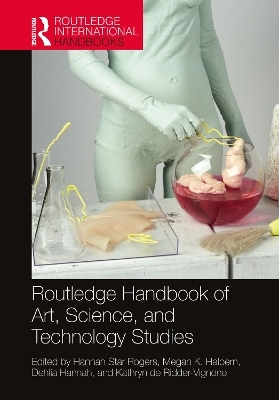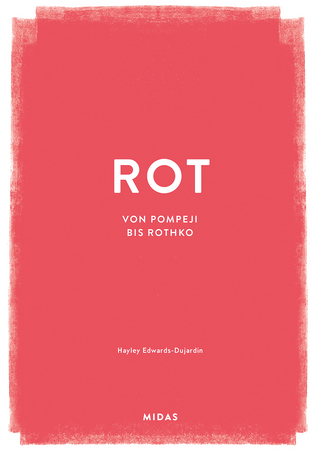
Routledge Handbook of Art, Science, and Technology Studies
Routledge (Verlag)
978-1-138-34730-4 (ISBN)
Art and science work is experiencing a dramatic rise coincident with burgeoning Science and Technology Studies (STS) interest in this area. Science has played the role of muse for the arts, inspiring imaginative reconfigurations of scientific themes and exploring their cultural resonance. Conversely, the arts are often deployed in the service of science communication, illustration, and popularization. STS scholars have sought to resist the instrumentalization of the arts by the sciences, emphasizing studies of theories and practices across disciplines and the distinctive and complementary contributions of each. The manifestation of this commonality of creative and epistemic practices is the emergence of Art, Science, and Technology Studies (ASTS) as the interdisciplinary exploration of art–science.
This handbook defines the modes, practices, crucial literature, and research interests of this emerging field. It explores the questions, methodologies, and theoretical implications of scholarship and practice that arise at the intersection of art and STS. Further, ASTS demonstrates how the arts are intervening in STS. Drawing on methods and concepts derived from STS and allied fields including visual studies, performance studies, design studies, science communication, and aesthetics and the knowledge of practicing artists and curators, ASTS is predicated on the capacity to see both art and science as constructions of human knowledge- making. Accordingly, it posits a new analytical vernacular, enabling new ways of seeing, understanding, and thinking critically about the world.
This handbook provides scholars and practitioners already familiar with the themes and tensions of art–science with a means of connecting across disciplines. It proposes organizing principles for thinking about art–science across the sciences, social sciences, humanities, and arts. Encounters with art and science become meaningful in relation to practices and materials manifest as perceptual habits, background knowledge, and cultural norms. As the chapters in this handbook demonstrate, a variety of STS tools can be brought to bear on art–science so that systematic research can be conducted on this unique set of knowledge-making practices.
Hannah Star Rogers is a Visiting Scholar at the University of Edinburgh, where she researches the intersection of art and science. Megan K. Halpern is an Assistant Professor in Lyman Briggs College at Michigan State University and a Scholar in Residence at MSU’s Center for Interdisciplinarity. Kathryn de Ridder-Vignone is Faculty Senate Chair at the South Carolina Governor’s School for Science and Mathematics, where she teaches future engineers, from across the state, about the complexities of science, technology, and engineering in action. Dehlia Hannah is Mads Øvlisen Postdoctoral Fellow in Art and Natural Sciences at the Department of Chemistry and Biosciences at Aalborg University and a Research Fellow of the Royal Danish Academy of Art and ARKEN Museum of Modern Art in Copenhagen.
Foreword by Trevor Pinch
Foreword by Caroline A. Jones
Introduction: The past, present, and future of Art, Science, and Technology Studies
Hannah Star Rogers and Megan K. Halpern
Section 1: Constructing borders and borders at the intersections of art and science
Hannah Star Rogers
1. What counts as data and for whom? The role of the modest witness in art-science collaboration
Silvia Casini
2. What can science and technology studies learn from art and design? Reflections on ‘Synthetic Aesthetics’
Jane Calvert and Pablo Schyfter
3. The skin of a living thought: art, science, and STS in Practice
Hanna Rose Shell
4. Aesthetic strategies for engaging with environmental governance
Christian Nold and Karolina Sobecka
Section 2: Making multidisciplinary histories
Hannah Star Rogers
5. The art-science complex
Chris Salter
6. Infrastructural inversions in sound art and STS
Owen Marshall
7. Emotion, affect and participation: why science communication practitioners should embrace a feminist ethics of care in their work
Britt Wray
8. Robert Hooke’s Micrographia: a historical guide to navigating contemporary images
Nina Sellars
9. The Xenopus pregnancy test: a performative experiment
Eben K. Irksey, Dehlia Hannah, Charlie Lotterman, Lisa Jean Moore
Section 3: Methods and modes
Megan K. Halpern
10. Doing research by means of art
Regula Valérie Burri
11. More than human trading zones in design research and pedagogy
Laura Forlano and Carla Sedini
12. Discovering alternative technological futures through literature
Jennifer L. Lieberman
13. Art’s Work in the Age of Biotechnology: how art can make arguments in science and technology studies
Hannah Star Rogers
14. Recipes for Technoutopia: on hospitality and infrastructure as experimental performance
Stephanie Beth Steinhardt
15. Reflexivity practiced daily: theatricality in the performative doing of STS
Yelena Gluzman
Section 4: Collaborations and collisions in art-science
Megan K. Halpern
16. Trading between science and art worlds: from biology laboratory to art exhibition
Nora S. Vaage
17. Art, artists, and the wrong kind of science education
Kathryn de Ridder-Vignone
18. Negotiations and love songs: integration, fairness, and balance in an art-science collaboration
Megan K. Halpern
19. Transdisciplinary co-inquiry as curatorial methodology: from the Canadian Arctic to the Calder Valley, Yorkshire
Nicola Triscott and Anna Santomauro
Section 5: Institutions and infrastructures
Kathryn de Ridder-Vignone
20. ArtSciLab: experimental publishing and knowledge production in collaborative transdisciplinary practices
Alex Garcia Topete, Chaz Lilly, Cassini Nazir and Roger F. Malina
21. Polymathic pedagogies: creating the conditions for interdisciplinary enquiry in art and science
Heather Barnett, Nathan Cohen and Adrian Holme
22. The future of arts integrative work: creating new avenues for advancing and expanding the field
Edgar Cardenas, Sandra Rodegher, and Kevin Hamilton
23. Feasting the Lab and other projects: art and science that skirts the limits of institutional frameworks
Jennifer Willet
Section 6: Democracy and activism
Hannah Star Rogers
24. We're all living in an Estroworld
Mary Maggic
25. Rustbelt Theater and citizen science: children’s environmental justice narratives
Lissette Lorenz
26. Artificial intelligence experience: participatory art workshops to explore AI imaginaries
Christopher Wood
27. Human germline gene editing is bioart: an open letter to Lulu and Nana
Adam Zaretsky
Section 7: Art as partner and critic
Hannah Star Rogers
28. The power of generative critique in art-energy projects
Lea Schick
29. Hemlock Hospice: landscape ecology, art, and design as science communication
Aaron M. Ellison and David Buckley Borden
30. Horizons of engagement: infrastructures of art and scholarship
Alexandra Lakind, Nicole Bennett and Robert Lundberg
31. Big pigs, small wings: on genohype and artistic autonomy
Ionat Zurr and Oron Catts
Section 8: Exposure to the elements
Dehlia Hannah
32. In the Middle of Something: in Search of Meso-Aesthetics
Andrew S. Yang
33. Curating in-between systems: Politics, ecology, and art
Stefanie Hessler
34. The future now: three tales of ocean plastic
Heather Davis
35. Becoming disaster literate: reflections on X AND BEYOND (2015-2017)
Jacob Lillemose
36. An Anthropocene journey: walking as embodied research
Nick Shepherd and Christian Ernsten
37. As we used to float: within Bikini Atoll
Nadim Samman and Julian Charrière
Section 9: Atmospherics
Dehlia Hannah
38. Archiving Atmosphere
James Graham
39. Becoming tornadic: a meteorology of media
Brett Zehner
40. Environ/mental ecologies in new media art
Anne Sophie Witzke and Jonas Fritsch
41. Changing imaginaries and new technoecologies of urban air
Hanna Husberg and Agáta Marzecová
42. Variations on Air
Anne Sophie Witzke and Dehlia Hannah
Section 10: The Gallery
Hannah Rogers
Designer: Molly Renda
| Erscheinungsdatum | 29.12.2021 |
|---|---|
| Zusatzinfo | 6 Line drawings, black and white; 105 Halftones, black and white; 111 Illustrations, black and white |
| Verlagsort | London |
| Sprache | englisch |
| Maße | 174 x 246 mm |
| Gewicht | 1551 g |
| Themenwelt | Kunst / Musik / Theater ► Kunstgeschichte / Kunststile |
| Naturwissenschaften | |
| Sozialwissenschaften ► Soziologie | |
| ISBN-10 | 1-138-34730-2 / 1138347302 |
| ISBN-13 | 978-1-138-34730-4 / 9781138347304 |
| Zustand | Neuware |
| Informationen gemäß Produktsicherheitsverordnung (GPSR) | |
| Haben Sie eine Frage zum Produkt? |
aus dem Bereich


